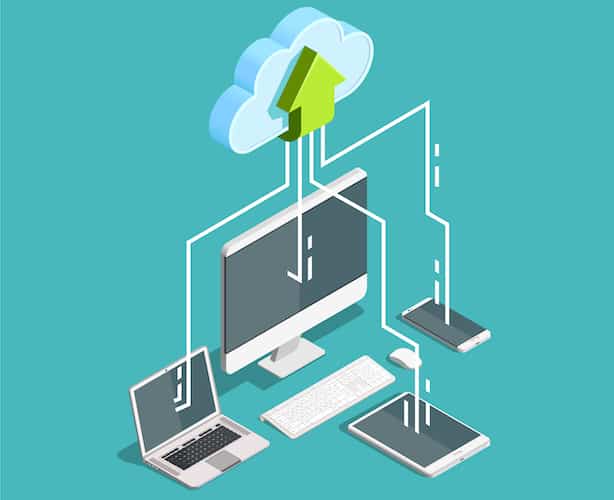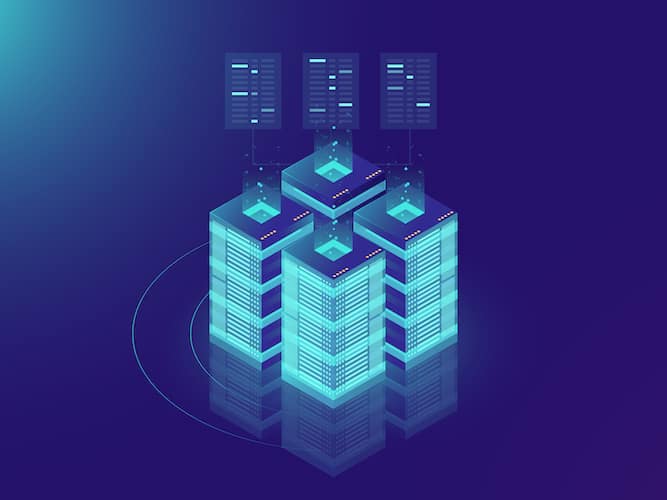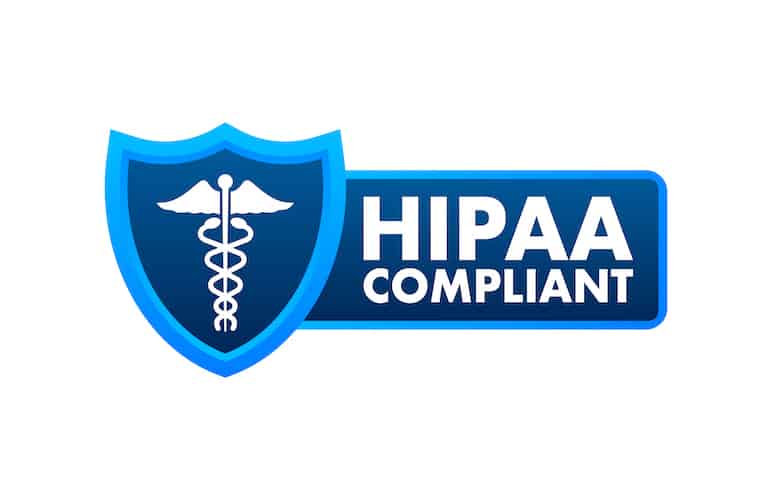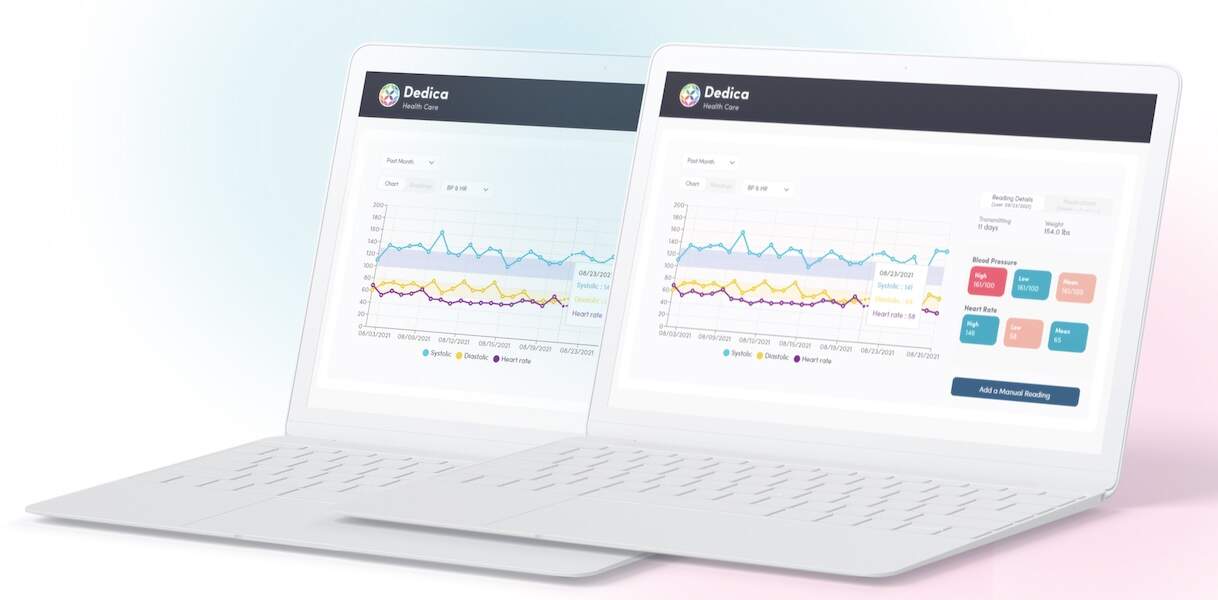Why is cloud computing in healthcare such a hot topic?
Imagine investing hundreds of thousands of dollars into technology and personnel training to increase the quality of patient care and efficiency of internal processes at your health business.
Imagine the headache of employing 3-5 engineers full-time to maintain your IT infrastructure.
Imagine having doctors plug into stationary computers to sync data from their portable devices.
Imagine workstations taken by IT people for maintenance updates for an entire day.
Now take it easy. Today, we’ll talk about cloud computing that makes all of that go away while still allowing you to enjoy the benefits of a cloud-based digital strategy.
Top Takeaways:
- Cloud computing in healthcare implies using medical software that syncs data processed at remote server data centers.
- Security and HIPAA compliance concerns are the most significant risks of deploying a cloud computing strategy for healthcare businesses.
- The top three advantages of cloud computing in healthcare are lower operational and upfront costs, faster time to market for new products and services, and higher efficiency of business processes.
Table of Contents:
- What is Cloud Computing in Healthcare?
- 10+ Advantages of Healthcare Cloud Computing
- Types of Cloud Computing in Healthcare
- Challenges and Risks of Cloud Computing for Healthcare
- Examples of Cloud Computing in the Healthcare Industry
- Topflight Experience in Adoption of Cloud Computing in Healthcare
What is Cloud Computing in Healthcare?
Cloud computing is closer than you think. When we check stock prices on our phones or run a Google search on our laptops, we tap into the immense potential of cloud computing.
Cloud
What exactly happens when we open the stocks app on the iPhone? The app pulls data on stock prices and financial news from the internet and displays it on a slim table for users. The key here is that the data comes from some server on the internet.
So, as long as we use software that needs to sync data with a server over an internet connection, we’re dealing with a cloud or clouds. For example, the Stocks app gets ticker data from the YahooFinance service. Also, it syncs our app preferences with Apple’s iCloud — another aptly named remote-server service.

There you have it: cloud is nothing more than enterprise jargon turned mainstream to describe anything that works over the internet.
And it’s cloud because you don’t know precisely where these servers are located — “somewhere up there.” For all that matters, cloud service providers like Amazon or Google have millions of servers clustered in data centers worldwide.
Quick takeaway: a cloud service implies using servers with stored data for syncing it with apps and other services.
Computing
As for computing, it’s really simple. Imagine all stock market data is stored on your phone (hardly possible cause we’re talking hundreds of gigabytes, but still). When we open Stocks, our phones now need to squeeze all their smarts into various calculations:
- show increase/decrease for tickers
- draw a graphic for the displayed stock (for different time intervals)
Compare computing all of that (plus a few things under the hood that the customer is typically not aware of, e.g., collecting issue logs, etc.) to simply downloading all the data via API from a server and displaying it. Even with the latest silicon, such computations would considerably slow down the app’s performance.
Imagine we deal with machine learning and endless data streams from wearable medical devices. Processing these large amounts of data locally becomes a bottleneck.
There you have it: computing involves processing large datasets in the cloud.
Quick takeaway: computing implies processing data by one or several servers, which means we can chew through massive datasets quicker.

Healthcare
Whenever we use cloud software to process any healthcare data that has to do with protected health information (PHI). It’s that easy.
Suppose your daily routine involves working with patient data, and the software won’t do much offline. In that case, you can call yourself a proud user of cloud healthcare computing. Because you get value from it only when its data is in sync with a remote server.
Quick takeaway: if any software relies on servers processing PHI data online, it’s part of medical cloud computing.
Generally speaking, cloud computing is a flashy term server/hosting service providers started throwing around in the mid-2000s to target enterprises, trying to differentiate from consumer SaaS products.
Related: How to Build a Healthcare App
At least some rudimentary cloud functionality is always present — even if it’s just connecting your mobile app to Google Analytics or a similar service to gather stats on the app usage patterns. Of course, such hidden features are not always critical to the functioning of your app, but you still sync data with a server (where it’s processed) to get more value from your product.
10+ Advantages of Healthcare Cloud Computing
The main driving force behind the growing adoption of cloud computing in the healthcare industry is processing massive amounts of data faster with minimal to no overhead. Now let’s take a closer look at all the benefits of cloud computing in the medical field.
#1: Lower cost of implementation/maintenance
Cloud computing removes all upfront costs. Healthcare organizations don’t need to purchase costly server equipment and hire dedicated staff to implement and maintain their infrastructure.
The pay-as-you-go approach ensures that they pay only for the resources being used. The spending is minimal when the app is inactive or has only a few users. Whereas with on-premise computing, you’d have to pay for its maximum capacity regardless of how much it’s used.
#2: Lower operating costs
Cloud computing for medical applications also removes a lot of manual labor, allowing for better resource allocation and fewer middlemen. As a result of more streamlined workflows, companies spend less on administrative or similar routine tasks.
#3: Faster data processing
The computing power of remote servers can be awe-inspiring. Whether you need to run machine learning algorithms, calculate an optimal route (e.g., for a pharmacy company tracking medicine delivery), or simply rank patients based on the severity of their health data — online servers are a must.
#4: Near-instant scalability
COVID-19 was a real stress test for the whole healthcare industry when providers had to quickly onramp their services to the cloud and make them available to patients online.
The beauty of cloud computing, though, is it’s scalable in both directions. We can quickly (and most often automatically) reduce resource consumption and get extra power when peak performance is required or during a sudden customer influx.
#5: Better interoperability and collaboration
Healthcare providers can easily collaborate regardless of their location. As long as they can go online, they can communicate with colleagues and patients anytime they need.
In addition, data can travel from one system to another in real-time, making it easier to provide comprehensive care to patients and exchange information with partners like insurance agencies, etc.
#6: 24/7 data availability
Again, all key stakeholders, including patients, doctors, nurses, medical staff, and insurers, can access data anytime from anywhere. And the best part is this data is always up-to-date.
#7: Better treatment outcomes
I know this should probably go first on the list of medical cloud computing advantages. However, this single benefit would include all the rest as better patient outcomes are the north star for all healthcare providers seeking to implement cloud computing.
The bottom line is that when we quickly process insurmountable amounts of data on servers, patients get more personal, holistic, and prompt treatment faster.
#8: Compliance and security
Ok, this one is tricky. We’ve all heard about data breaches in healthcare organizations. However, if you choose the right healthcare app development company and work with HIPAA-compliant cloud service providers, you can achieve better security against natural disasters and force majeure accidents.
Also Read: HIPAA Compliant App Development
#9: Patients are in control of PHI
In the worst-case scenario, healthcare apps using cloud computing allow patients to download their data and go to another provider. And the best-case scenario is when patients can decide which data becomes available to which provider.

#10: Customization
It’s easier to add new features to cloud software, period. You cannot even imagine the hassle of updating locally running apps without internet access. Contrary to that, cloud computing makes updates available to all users immediately. Plus, you can test new functionality on a selected audience to prevent unnecessary drama.
#11: Transparency
One thing management loves about cloud computing applications in healthcare is extensive logging of all actions. Any change an employee has made to software can be tracked and examined if necessary.
In addition, all providers get greater visibility into their colleagues’ work.
#12: Quicker time to market
Another undeniable benefit of cloud computing for healthcare is time to market. All the growth we witness in the sector is because startups can enter the market x times faster than if they were to set up their cloud infrastructure by themselves. Plus, scalability kicks in — you can enter the global market, providing seamless, connected experiences to your customers.
#13: Healthcare industry uplift
Finally, the pace of innovations available with cloud computing makes incumbents advance technology solutions. As a result, medicine becomes more intelligent and accessible, shifting towards a value-based paradigm.
In other words, it’s hard to overestimate the importance of cloud computing in medicine.
Types of Cloud Computing in Healthcare
When thinking about cloud computing and healthcare services, you need to realize it can take different forms. What are they?
Multiple front ends
First of all, to the end user, cloud computing may look like any mobile or web application working on whatever platform, be it:
- smartphones
- tablets
- smartwatches
- browsers
- wearables
In short, anything with an internet connection capable of displaying a user interface can be powered by cloud computing on the back end. In fact, many SaaS applications often use the omnichannel strategy to cover customer needs across several platforms.
Hosting
The opposite of cloud computing is on-premise hosting — when all data is stored and processed on local servers. Unfortunately, this approach typically means vast overheads. However, that’s what you’d witness at banks, pharmacy chains, and other large enterprises for their development needs.
The on-premises computing environment works the same as computing taking place on remote servers, except it doesn’t connect to the outside internet and powers software locally through a local network.
Lately, companies have also adopted a hybrid approach — that’s when some operations are hosted locally with minimalmin or no connectivity to the internet, and the rest work in the cloud.
Previously, the local setup was also referred to as private cloud. However, nowadays, companies can create a private cloud using service providers like AWS. And the only difference from the default cloud computing is that they use dedicated IT infrastructure, not shared with other AWS customers.
Software type
If you’re considering a digital strategy, you may have run into terms like SaaS, IaaS, and PaaS:
- Software as a Service
- Infrastructure as a Service
- Platform as a Service
Without going too much into detail about their peculiarities, you can think of them as:
SaaS. Think Gmail. The only reason Google doesn’t promote it as SaaS is that it targets the casual consumer sector. Generally speaking, any connected healthcare software you may use on a subscription basis falls within this category.
Another good analogy is Google Workspace — a suite of Google products targeting businesses with basic cloud computing needs like storing files, holding conference calls, messaging, and collaborating on documents.

Iaas. Think your own custom-developed Google Workspace, but you don’t want to deal with hardware and software updates and management. It’s like renting servers that are automatically updated, etc.
PaaS. Think your development team needs ready server environments for developing, testing, and deploying software. PaaS comes with all the underlying IT infrastructure, like operating systems, data management tools, etc.
Challenges and Risks of Cloud Computing for Healthcare
No technology is perfect, and cloud computing in the healthcare sector is no exception. So what are the main risks when going online?
Security
Above all the things that could go wrong with cloud computing, security is the biggest threat. I mean, there’s no denying that keeping all information at an on-premiseon-remise data center is more secure. However, as soon as you add scaling into the picture, the security model of a local private cloud immediately starts plummeting. How do you move big data between distant facilities over a local network?
Always pick only HIPAA-compliant providers, but how do you know they follow these healthcare safety standards to the tee? That’s why most providers stick with AWS, Microsoft, or Google cloud solutions — they need the reassurance of a big brand.
There’s a lot that goes into securing PHI. We won’t go into detail in this blog, but at the minimum, ensure your healthcare cloud computing provider supports advanced identity and access controls and offers automated backups.
Qualified staff
Various applications of cloud computing in health systems require talented engineers trained in implementing specific cloud technologies. For example, AWS or Google Cloud have amassed so many services that it can take a lot of time for a programmer to make sense of all its features. And if you stick with a generalist, they’ll likely miss something or won’t use a platform to its full potential.
Migration from legacy systems
Moving your software and the underlying infrastructure to the cloud can be challenging to complete in a single whoop. That takes time and a considerable investment, including on-ramping a development team and training personnel.

Walled gardens of cloud sectors
You have to carefully think through the architecture of your cloud infrastructure before implementing it. If you stick with certain cloud technologies, you might not be able to smoothly integrate with other cloud systems/providers.
No silver bullet
Fortunately, when you decide it’s time to move your business operations to the cloud, you don’t have to make a hard choice to go all in. If you feel you need to make a hard choice about on-premise vs. cloud computing in relation to health care, you can take a breath.
Businesses successfully match both approaches to achieve their goals. The hybrid approach works perfectly when you know how to balance cloud vs. private implementations.
Examples of Cloud Computing in the Healthcare Industry
The key players providing the layer one IT infrastructure for healthcare organizations looking for cloud computing services include:
- Google Cloud Platform
- Amazon Web Services
- Microsoft Azure
It’s hard to count all the applications of cloud computing in healthcare. Let’s focus on a few key areas.
EHRs
Who doesn’t know about Epic or Cerner electronic health records in our day and age? These systems syncing patient data are the lifeblood of digital medicine.
Examples: Epic, Cerner, Allscripts.
Related: Guide to integrating your healthcare app with EHR
Telemedicine
Communication with doctors at a distance no longer feels weird after the COVID-19 pandemic. In fact, that was the sole means for healthcare businesses to survive and continue providing care to patients.
Examples: Teladoc, Amwell, Doctor on Demand
Related: Telemedicine App Development Guide
Medical imaging
Involves artificial intelligence and ML-based image processing, storing, and tagging; it helps with more accurate diagnosing.
Examples: 3mensio, Ultima 360, Arterys.
Related: Computer Vision in Healthcare Applications
E-prescription
Getting medicine à la Uber fashion is becoming more and more popular.
Examples: Rxnt, CoverMyMeds, PrimeSuite.
Hospital/practice management software
These systems typically include lots and lots of features. Still, they have modules that can be turned on/off depending on your practice/clinic requirements.
Examples: Luma Health, Kareo, Attune, eClinicalWorks.
Billing
Being able to remediate and process payments from customers while maintaining HIPAA compliance is a big part of why healthcare and cloud computing are meant for each other.
Examples: Naologic, Cliniko, NueMD, Invoiced.
Also Read: Comprehensive Medical Billing Automation Guide
Remote patient monitoring
Another impressive feat that server technologies unlock for healthcare is being able to track patients’ health data remotely and act proactively.
Examples: Jotform, Senseonics, CoachCare.
Also Read: RPM App Development Guide
Clinical trial management
Clinical trial management systems are used to manage clinical trials in clinical research. Typical features in such platforms include planning, reporting, patient portals, tracking deadlines, etc.
Examples: BioClinica, OpenClinica, Advarra OnCore.
We’re just scratching the surface here because there are many more applications of cloud computing in medicine, e.g., the Internet of Things, wearables, etc.
Read more on clinical trial software development
Topflight’s Experience in Adoption of Cloud Computing in Healthcare
I’d really struggle to find a single healthcare product built by Topflight that would not lean on cloud computing. If you look at a typical project, it’s often a web dashboard for physicians gathering data processed on secure HIPAA-compliant servers like Dedica. By the way, working with ready-made platforms for creating reports gives you way more control with custom dashboards.
 Even if you look at the most “simple” (from the customer’s perspective) mobile app like JOOVV, a smart remote for light therapy devices, and look under the hood, you’ll find traces of cloud computing. Because our partner producing the light therapy equipment needs to collect data on app performance, update contents in the app, and update the firmware.
Even if you look at the most “simple” (from the customer’s perspective) mobile app like JOOVV, a smart remote for light therapy devices, and look under the hood, you’ll find traces of cloud computing. Because our partner producing the light therapy equipment needs to collect data on app performance, update contents in the app, and update the firmware.
If you’d like to discuss how medical cloud computing can improve operations at your healthcare organization, reach out today.
Frequently Asked Questions
What is cloud computing in healthcare in a gist?
Medical records (PHI) data storage and processing “on the internets.” For example, EMR — electronic medical records.
Why consider cloud computing for a healthcare business?
Lower costs, better efficiency/outcomes, dramatically faster time to market for introducing new products or services.
What should I consider when migrating to cloud computing in the healthcare sector?
Security and HIPAA compliance are the most significant risks. So choose your vendors and service providers wisely.


